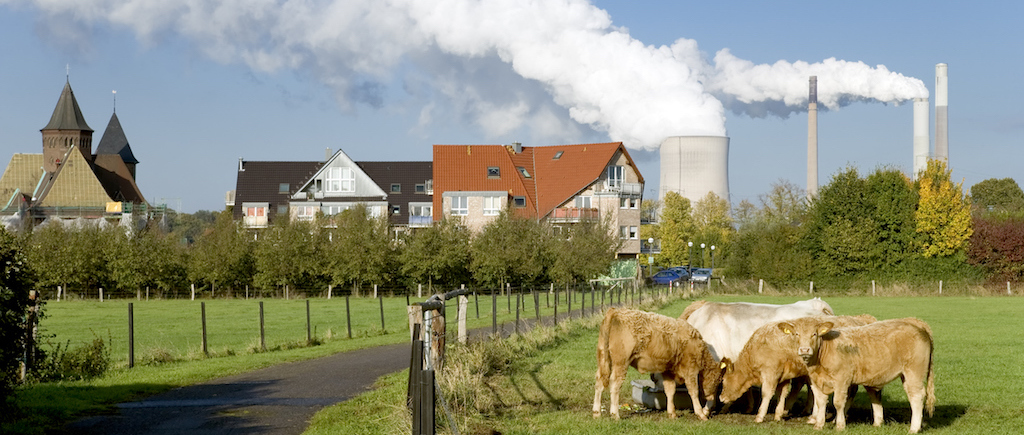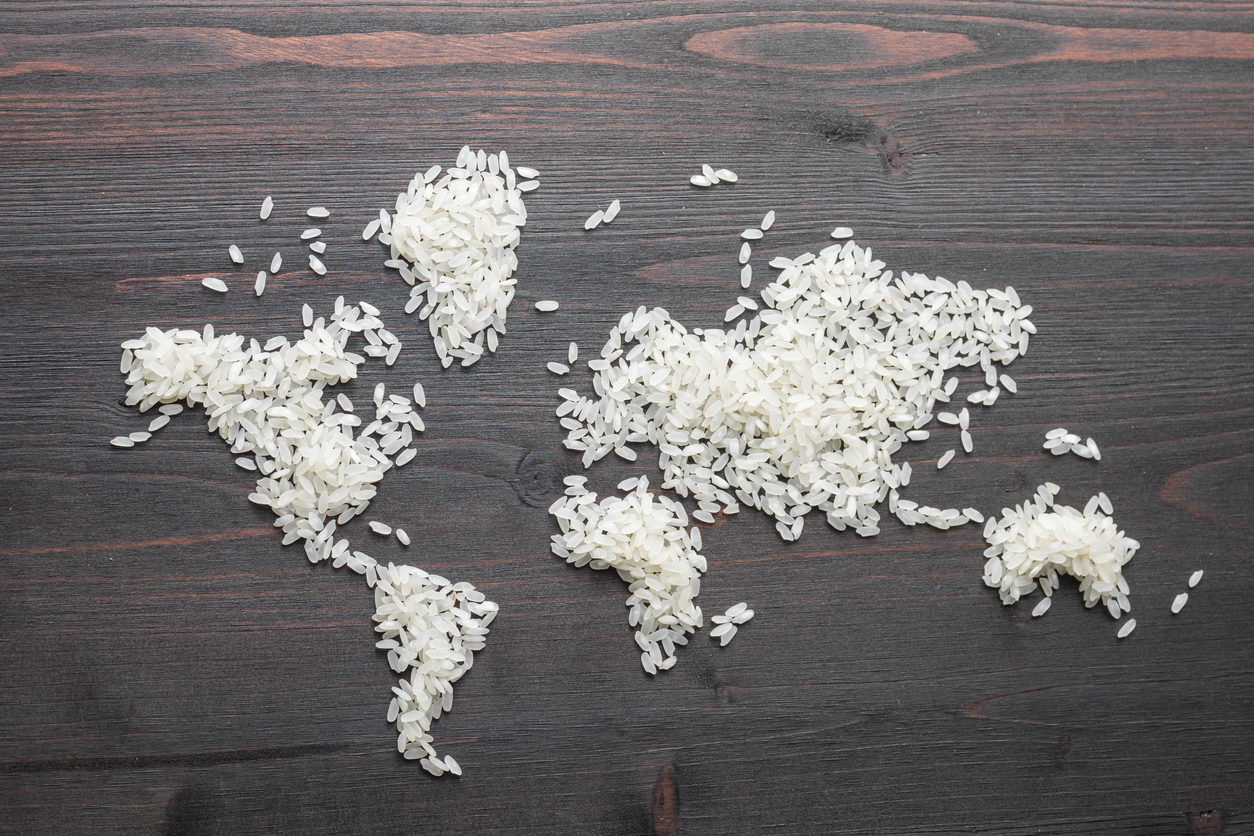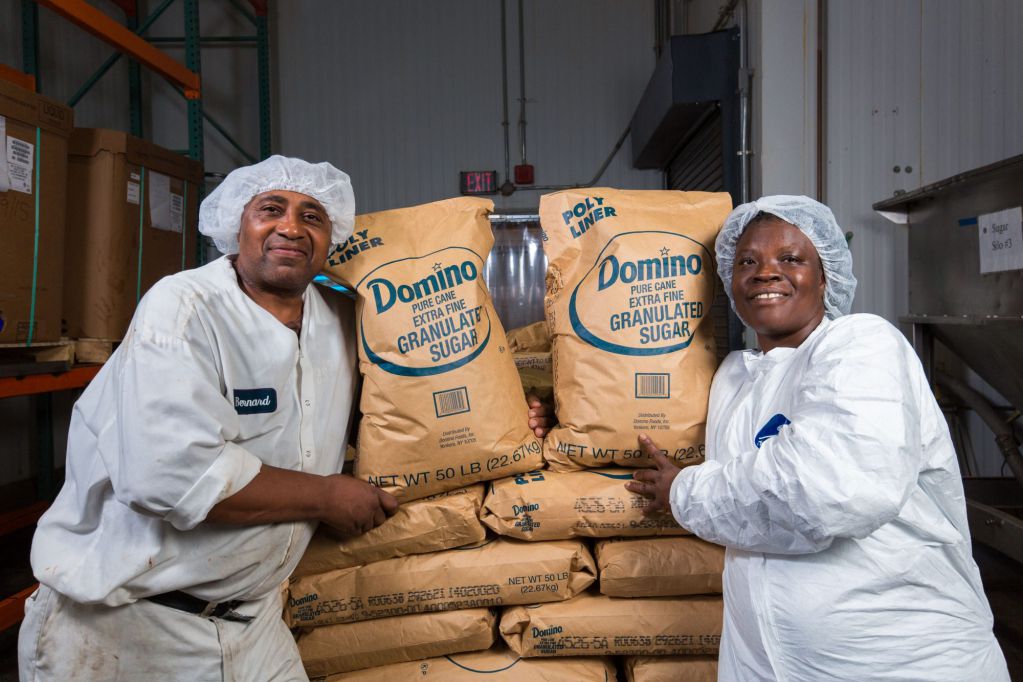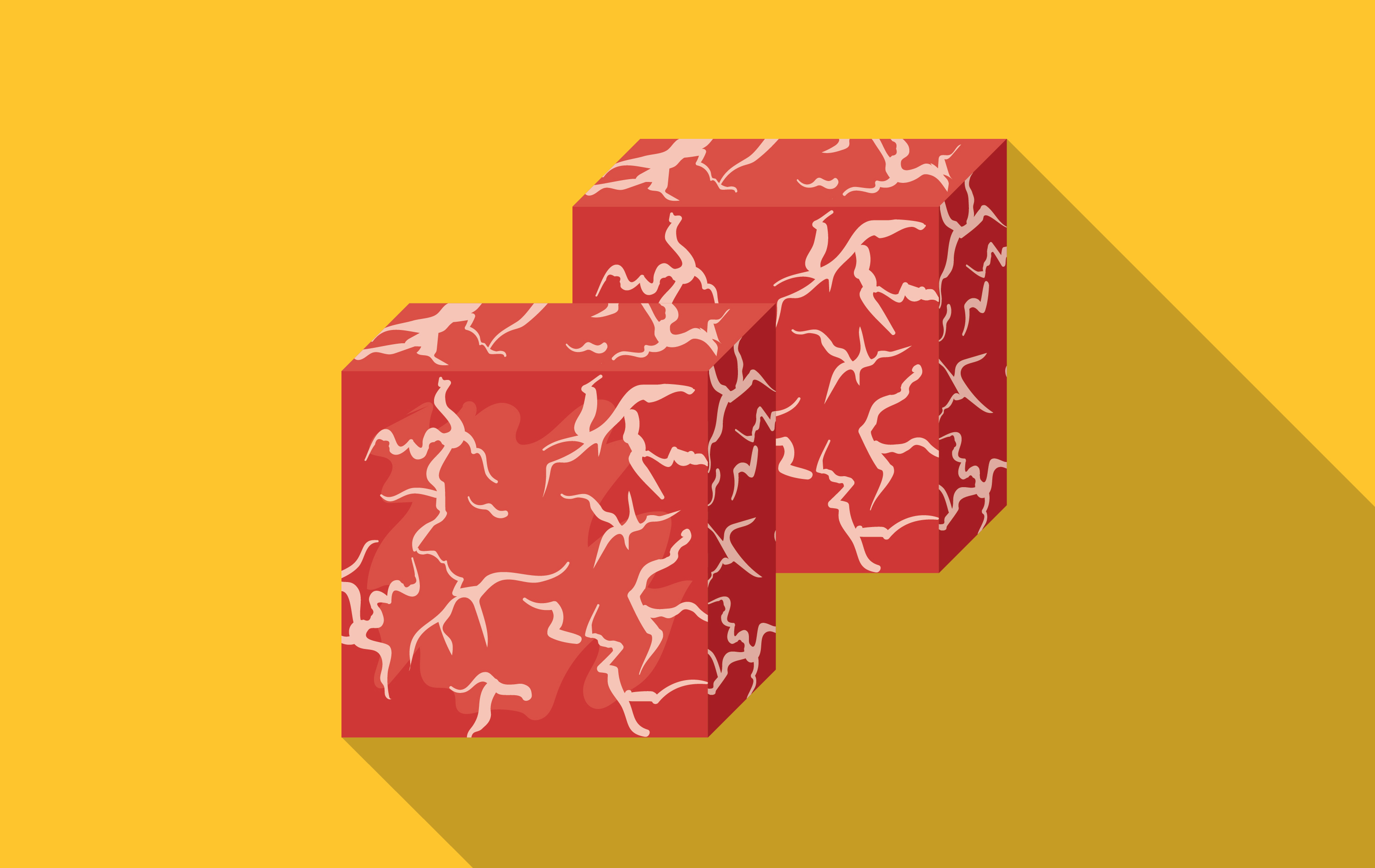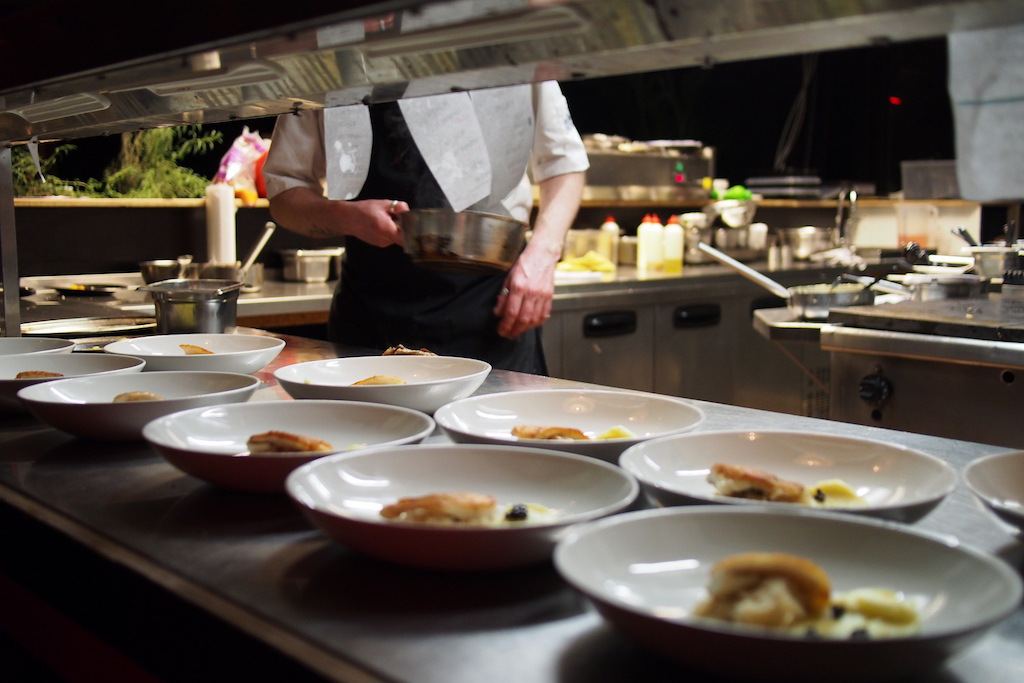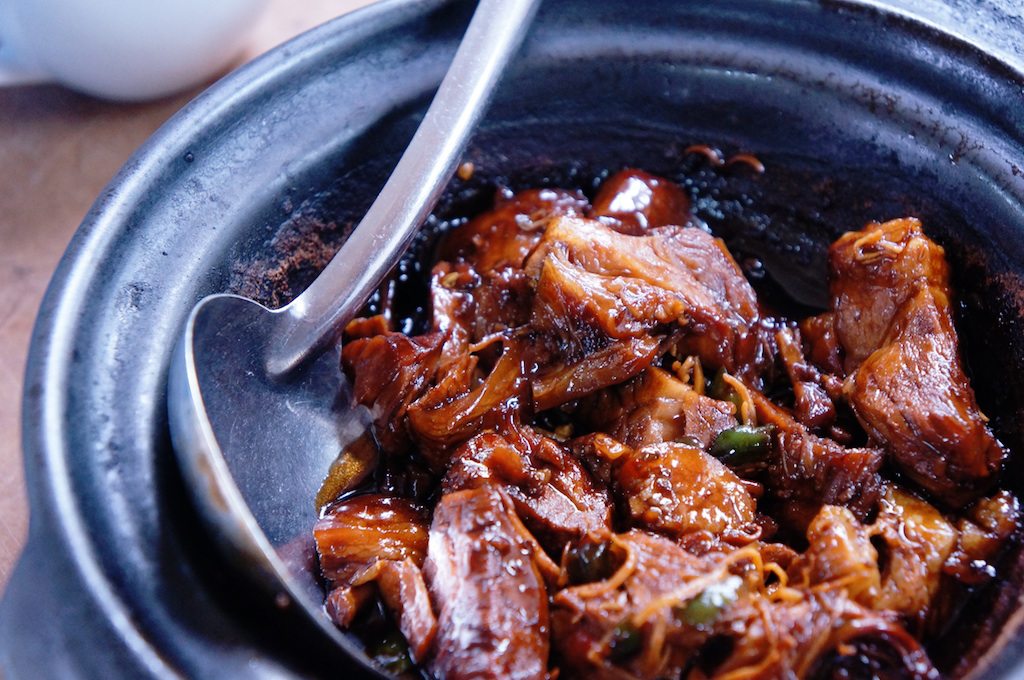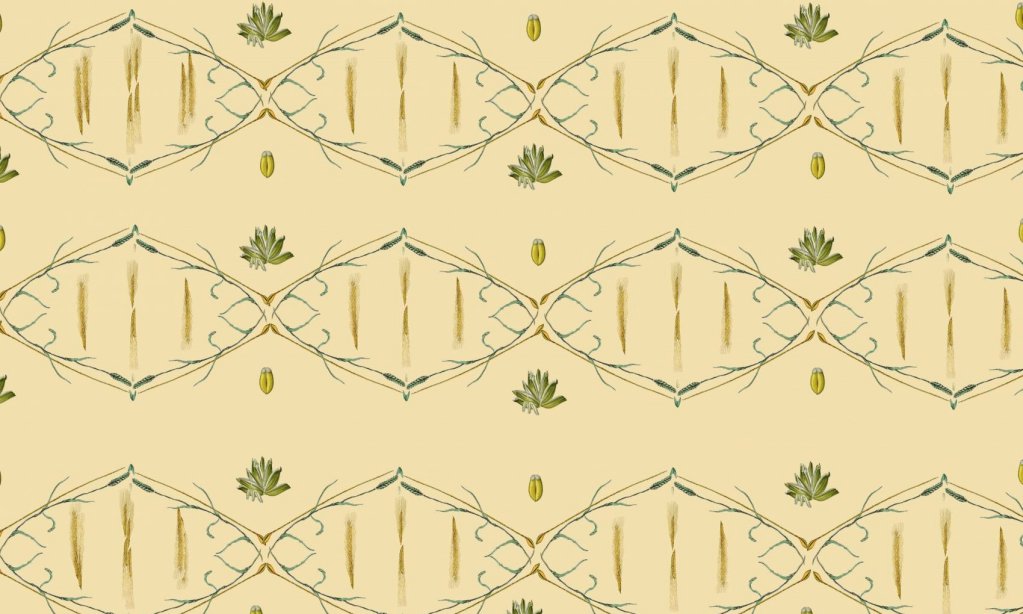
Claire Brown
On June 13, a group of scientists known as the International Wheat Genome Sequencing Consortium (IWGSC) released what was described as a “whole genome assembly” for bread wheat. I didn’t see a ton of headlines, but to anyone who cares about food and the challenge of feeding the 9 billion people who are expected to live on Earth by mid-century, it was an incredibly important (and incredibly fascinating) landmark.
Why so important? Because wheat is so important. Your friends may be going low-carb and gluten-free, but the planet still relies heavily on the big three grains—wheat, rice, and corn—which together account for more than half the calories consumed by people worldwide. Wheat alone makes up about 20 percent of the world’s caloric intake. Rice provides more calories, but not as much protein.
Left: Bread wheat; Right: Einkorn
Some developed countries like the United States are consuming less wheat per person, but with population growth in mind, the IWGSC estimates that we need to increase annual production 70 percent by 2050, or close to 2 percent a year. We’re not, though. In fact, between 2000 and 2008, wheat production fell by about 5.5 percent, largely because of climate change. And the wheat we grow today, though it is extremely productive in terms of tons per acre, is not ideal for the challenges the global food system is beginning to face.
For one thing, everyone is growing roughly the same plant: There’s not a great deal of genetic variation available in widely planted strains, and that makes it more difficult to produce newer strains with more desirable traits. And the traits that seemed highly desirable during the “Green Revolution” (which transformed food production in the mid-20th century) look less desirable today. Most wheat today is extremely dependent on fertilizers and irrigation. It’s not optimized for organic growing. And looking to the question of climate change itself, contemporary wheat, with its shallow root system, not only does a poor job of returning carbon to the soil, but it also requires tilling that releases more carbon into the atmosphere. Breeding programs are under way to produce new varieties, but progress is slow.
The best tool for accelerating a breeding program is, you guessed it, a genetic map of the organism you’re trying to improve—and this goes for conventional breeding programs, not just genetic engineering projects.
“It is the equivalent of working with a scalpel rather than with a blunt instrument,” wheat breeder Haydn Kuchel told Australia’s Farm Weekly. “This sequencing means we will be able to use more markers on more genes and be more accurate and it will be cheaper to use.… With the genome, that will mean we can work purely with the genetics. We can select the genes without destroying the plant and it will also be really useful in allowing us to monitor key traits right through the breeding process. Currently, with an issue like resistance to cereal cyst nematode (CCN), you can test that only right at the end of the breeding process, meaning potentially you could have a good variety nearly ready, but it falls down because of susceptibility to CCN.”
“With the increased use of molecular markers, we can monitor these traits from day one.”
If the wheat genome is so vital, the obvious question is why we have had to wait until now to get it. After all, the Human Genome Project was declared complete back in 2003.
The answer is basically that creating any genetic map is difficult (the Human Genome Project took 15 years), and the genome of wheat is outlandishly large and complex—so much so that many people doubted it would ever be successfully mapped.
Let’s recall the basics. Your genome is all the information contained in the DNA in your cells, written in biology’s astonishing four-letter alphabet—G, C, A, and T, for guanine, adenine, cytosine, and thymine, DNA’s core components. The chapters of the book are chromosomes; human cells have two copies each of 23 chromosomes. Think of a chromosome as a long ribbon, with the text of the chapter written on it, a letter at a time, with no spaces, no breaks. Along the way, there are passages—genes—that make things happen in the body, determining whether you have brown eyes or blue, or if you’re wheat, how you react to high temperatures or nematodes. What the wheat breeders want is a full end-to-end map of every chromosome, identifying where the genes sit on the ribbon, and ideally what their function is—what they “code” for.
“The best researchers can do is chop it up into smaller pieces and read those”
The problem (and I’m simplifying here) is that we don’t have the technology to read a chromosome end to end in a single pass. The best researchers can do is chop it into smaller pieces and read those. But then the challenge is to reassemble them in the right order.
Picture it like this: You’ve got a book, let’s say Harry Potter and the Deathly Hallows—printed out on a long ribbon. You’ve chopped it into thousands of short bits, and now you want to put the story together again. It’s pretty much impossible if you have just one copy. But if you have two or more, and some time on your hands, you can do the job by looking for repeats and overlaps. You might find fragments like these:
—Hogwarts was the first and best home he
—and Snape, the abandoned boys, had
—home he had known. He and Voldemort and Snape,
—the abandoned boys, had all found home here.
With a little puzzling, you can reassemble it to “Hogwarts was the first and best home he had known. He and Voldemort and Snape, the abandoned boys, had all found home here.” The principle is simple. Putting it into practice requires sophisticated software and tons of computing power.
And then there are the specific complications of working on wheat. First off, the bread wheat genome is huge, much larger than the genomes of comparable crop plants. Rice’s DNA consists of 430 million base pairs (the basic unit of DNA’s information-carrying capacity). Corn has 2.5 billion, human beings about 3 billion. Bread wheat has 17 billion. For a sense of scale, let’s stick with the book metaphor. Picture the complete works of William Shakespeare. Now imagine 3,500 copies of it. That’s how much information the bread wheat genome contains.
And to make it more complex, because of the sequence of events that led to the development of wheat out of a group of three earlier grasses, wheat’s genome is complex as well as large. Remember how I said the human genome includes two copies each of 23 chromosomes? Well, bread wheat has six: two copies from each of the three ancestor plant. It’s kind of like carrying three genomes at the same time.
So it’s not quite like sequencing Deathly Hallows. It’s more like sequencing Deathly Hallows, Prisoner of Azkaban, and Philosopher’s Stone at the same time, only with versions of the books that are a thousand times longer thanks to the addition of vast ranges of repeated passages.
It took a while.
And realistically, the project is not complete yet. The genome is good enough for researchers to start working with and contributing to, but there are still a couple of years to go. According to the IWGSC, the current version accurately represents more than 90 percent of the highly complex bread wheat genome, contains over 97 percent of known genes, assigns the data to the 21 wheat chromosomes, and includes a complete end-to-end sequence for one chromosome—an enormous achievement. The ultimate goal is a “gold standard” genome, “a high quality, ordered sequence of the wheat genome that includes annotating and identifying the precise locations of genes, regulatory elements, and markers along the chromosomes, thereby providing invaluable tools for wheat breeders.” Sequencing technology has improved radically in recent years, and the next iteration is expected within the next two years.
So should we date the breakthrough to today, or to last January, when the consortium finished the basic work on it, or to a year or two from now, when the gold standard version is complete? Scientific progress can seem pretty smudgy when it’s rolling past. It’s much easier to tell in retrospect.
But honestly, sometimes you need to acknowledge progress, if only to keep from despairing at how little progress we tend to see. After last week, when the news was full of the dreadful things human beings do to each other, the wheat DNA is worth celebrating as a true step toward a better world. When the day comes that we’re feeding the 7 billion with wheat that’s resistant to diseases, adapted to local conditions throughout the world, productive, nutritious, and kind to the environment, let’s look back and say, it started now.



